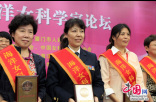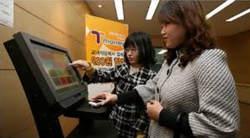Is the lack of technical women a global issue?At Global Tech Women we believe the solutions to increasing the numbers of technical women must be viewed holistically and around the globe. This is not a national issue, but a global one.
China
September 1, 2013: "Only 11 percent of the software developers Hays recruited on the mainland from July 2012 to June 2013 were women. The rate was 3.2 percent in the previous 12 months. (China Daily, Geek Girls, A Man's World)
Czech Republic
May 7, 2014: "A study released in 2009 by the European Union sited the Czech Republic as the ninth worst country out of the 29 European countries surveyed for gender stereotyping at work. In computing professionals, for example, just 9.5 percent of those employed in the Czech sector were women, the worst proportion of the 28 countries surveyed in 2009. (Radio Prague, Modest progress leaves gender stereotyping still strong on the Czech jobs market, Chris Johnstone)
European Union (EU)
November 18, 2013: "A recent study from the European Commission (EC) claims that a lack of opportunities for women in tech firms is damaging the economy in the region.
According to the ‘Women Active in the ICT Sector’ report from the European Commission, women are still underrepresented in IT jobs. For every 1,000 women in the EU with a degree, only 29 hold a degree in information technology, compared to 95 men. Also just 4 of those women will eventually work in the IT sector." Finland
March 20, 2014: "In further and higher education, women accounted for 89 per cent of the degrees completed in the field of social and health care in 2012. The field of education and teaching was similarly dominated by women, who were granted 77 per cent of the degrees that year. 69 per cent of the degrees completed in the service sector were completed by women.Men, contrastively, continue to be drawn to hard sciences and in 2012 accounted for 94 per cent of the degrees completed in technical fields, 66 per cent of the degrees in the field of agriculture and forestry, and 58 per cent of the degrees in natural sciences." (Helsinki Times, Men left behind as gender gap in education widens, Anni Lassila – HSAleksi Teivainen – HT)
Hong Kong
November 21, 2013: "In Hong Kong universities, men still dominate these fields. At the Hong Kong University of Science and Technology, for example, women comprise just 21 per cent of engineering students. A 2013 Economist Intelligence Unit survey of 57 companies in Hong Kong showed that 88 per cent of IT directors are male, and women represent fewer than 10 per cent of IT staff at more than half the companies. Even in large software companies in Hong Kong, where women are entering at the same rates as men, attrition rates in mid-level management are leaving a significant hole in the leadership pipeline." (South China Morning Post, Su Mei Thompson and Lisa Moore)
India
July 15, 2013: In India, the percentage of women in the IT space is way low when compared with countries like the UK, Malaysia and the US. Sample this: In India, women’s representation in the IT industry is 21% at the entry level, way lower than Malaysia’s 55-57%. The numbers at the mid-level falls to about 14 –15%, while it is only 5-7% at the top managerial level. (DNAIndia.com, IT Companies Drawing Policies to Tackle Dismal Representation of Women in Top Posts)
Ireland
January 31, 2014: It is estimated there are 188,000 people working in the information and technology sectors at present, with women accounting for 25%. (RTE News, Concern Over Number of Women in Science and Tech by Staff Writer)
Japan
February 7, 2014: The Education, Culture, Sports, Science and Technology Ministry conducted a survey in 2012 and found that women constitute a mere 14 percent of all researchers in Japan. By comparison, more than 30 percent of the researchers in the United States and United Kingdom are women. In Japan, women’s numbers are particularly low in the physical sciences, engineering and agriculture.
Nagoya University, which has gained a reputation for scientific research, is no exception. These fields are largely dominated by men at the university, which has only 45 female professors, excluding contract faculty. This translates into a ratio of around 4.8 percent. (The Japan Times, Female Scientists Push for Breakthrough in Equality, Chinichi Shimbun) New Zealand
December 12, 2013: A technology industry group is trying to encourage more women to work in the sector. A recent survey of information and communications technology (ICT) companies found they would be hiring thousands of staff in the coming years, but very few applications are from women. Half of respondents reported between zero and 10% of job applications are from women.
Technology Industry Association chief executive Candace Kinser says there is a shortfall of about 10,000 people in the industry. She has started a group, Women Tech Execs, with female executives to encourage more women to consider ICT as a career path. The group also plans to lobby the Government to look at how technology can be better taught in schools. (Radio New Zealand, Shortage of Women in IT) Scotland

February 26, 2014: A new placement scheme has launched to boost the number of women choosing these two fields as a career. Forty-five new summer placements have been created as part of the Careerwise initiative, which aims to help create a more equal workforce.
Currently, only 13% of the science, engineering and technology (SET) workforce in Scotland are women. (The Edinburgh Reporter, Placement scheme offered to encourage women scientists and engineers, Phyllis Stephen) South Africa
April 3, 2014: Statistics such as those released by the Institute of Information Technology Professionals (IITPSA) state that 56% of global ICT professional jobs are held by women, but in South Africa – where women comprise 55% of the country’s entire workforce – only 20% of the ICT workforce are women.What these numbers do not reflect is the fact that more than 68% of South African women have enrolled in the ICT related courses at tertiary institutions in the last few years. Most tertiary institutions’ science and technology faculties are also dominated by female students these days. (BBQ, ICT Lacking Women at the Helm, Kgabo Ralebepa)
South Korea
February 14, 2014: Ogawa, who is conducting a comparative study on female researchers between countries in East Asia, has found that Japan, with just 14% of researchers being women, is even behind South Korea, now at 16%. (University World News, Breakthrough highlights lack of women in science, Suvendrini Kakuchi)
United Kingdom
February 27, 2014: UK: Only 17% of engineering students are women. This columnist for the Huffington Post believes House of Commons Science and Technology Committee isn't doing enough and provides their own analysis. (Huffington Post, Women Into STEM Careers - Is the UK Missing the Boat?, Dr. Gordon Mizner)
United States
June 3, 2013: Data from the Level Playing Field Institute. Women's share of Computer Science degrees in 2010: Bachelor's 18%, Master's 27% and PhD 21%. Electrical Engineering: Bachelor's 10%, Master's 20% and PhD 17%. (Wall Street Journal, After Leaning In)
|
Like us on Facebook!
|
